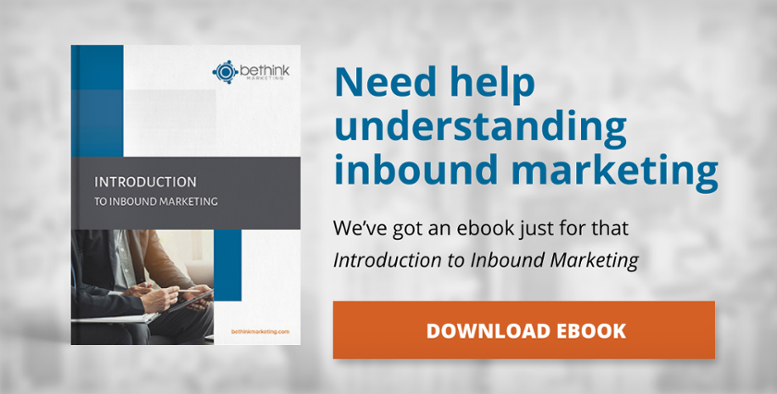
It’s easy to talk about the different activities of online marketing. If you ask the President of the company or the sales team what their current online efforts are, they can name quite a few without much reflection; social media, newsletters, website, email campaigns and blogs are the common ones that we hear.
However, it becomes a different ball game when you put all those online marketing activities in the context of lead generation and customer acquisition.
- How are you driving traffic to your website?
- How are you converting that traffic to become leads?
- How are you nurturing those leads to become customers?
If you are able to answer all of the questions above, there is no doubt that you have a great understanding of Inbound marketing and your company. But if you are finding them difficult to answer, it’s time to apply Inbound marketing to your financial service firm and avoid wasting time and effort on the online marketing activities your firm invests in.
What is Inbound Marketing?
Inbound marketing is an effective, more efficient way to generate leads and acquire new customers. It is a process for sales and marketing that matches to how prospects buy today.
This process orchestrates all your online marketing efforts to ensure that you GROW.
To better understand what Inbound Marketing is, you must first understand the Inbound Methodology.
The Inbound Methodology
The Inbound Methodology has 4 components: Attract, Convert, Close & Delight. Each of these components utilize online marketing tactics to achieve the purpose of each one.

1. Attract:
You want to first attract visitors to your website. But more importantly, you want to attract the right kind of traffic, that is, prospects that will likely become leads for a company. This is where you focus on writing and publishing relevant blog articles on your website and social media to be found on search engines by such prospects.
2. Convert:
Now that you have traffic coming to your website, you will need to convert those visitors to become leads. This is where you need to start a conversation with them. And to start a conversation, you need to know their name and contact information.
As you use your blog to drive traffic, also use your blog as an opportunity to capture their contact information. You can do so by placing a CTA (call to action) in your blog article to download a more extensive content piece about the blog subject matter. For example, if you are blogging about real estate investments, your CTA would prompt prospects to download a free checklist that would assist in selecting the right real estate investment opportunity.
3. Close:
We all know that the sales cycle could be quite long. Most leads are still exploring and are not sold on one specific solution just yet. You need to guide them along this journey by nurturing them with more relevant content.
Following the example, if they read your blog about real estate opportunities and downloaded your free checklist, what other content could you send to help them and eventually lead them to your solution?
4. Delight:
Having customers is great, but having your customers bring you more business is even greater. You want to make your customers successful and provide a remarkable experience so that they will want to invest more in the future and refer potential customers to you.
Some practical applications of the 4 Inbound methodology components for your financial service firm:
1. Attract:
Write blog articles that are helpful for your ideal customers. Focus on problems that you can help solve related to your industry and hold back on promoting your investment solutions.
2. Convert:
For every blog article that you write, make sure that you have a CTA at the end of every single one. The CTA should lead readers to download more extensive content related to the blog topic in exchange for their contact information. Here is an illustration of the example when we were explaining CONVERT.

3. Close:
Depending on the length of your sales cycle, create 4 email templates to nurture your leads so that when advisors call them, there is a much higher success rate thanks to all the help you have provided them prior to calling. Each email template should consist of content that is relevant to what they have consumed so far.
4. Delight:
Call your most successful clients, ask them to share about their experience to bring to mind the positive experience they themselves had, and then ask them for referrals so that you can help others to be as happy as you made them.
How do I know if Inbound Marketing is working for my business?
It’s hard to measure the results of your efforts if you run your marketing activities here and there. You will need to find a way to put it all together so that you can assess if all 4 components of the methodology are working well together to drive growth for your financial service company.
Luckily, there are great software out there such as HubSpot where you can run all your marketing activities under one platform, overseeing the 4 components of the Inbound Methodology and obtaining measurable data for everything that you do.
It is important to know how many visitors, leads and customers you have acquired and their sources all in one place. Without this data, there is no way to measure what is needed to reach your revenue goal.
If you want answers to the following questions, then Inbound marketing along with an Inbound marketing software like HubSpot is a must.
- How many customers do you need to hit the revenue goal?
- How many sales opportunities do you need to close the desired amount of customers?
- How many leads do you need to create those sales opportunities?
- How much traffic will be needed to capture those leads?


Let Us Know What You Thought about this Post.
Put your Comment Below.